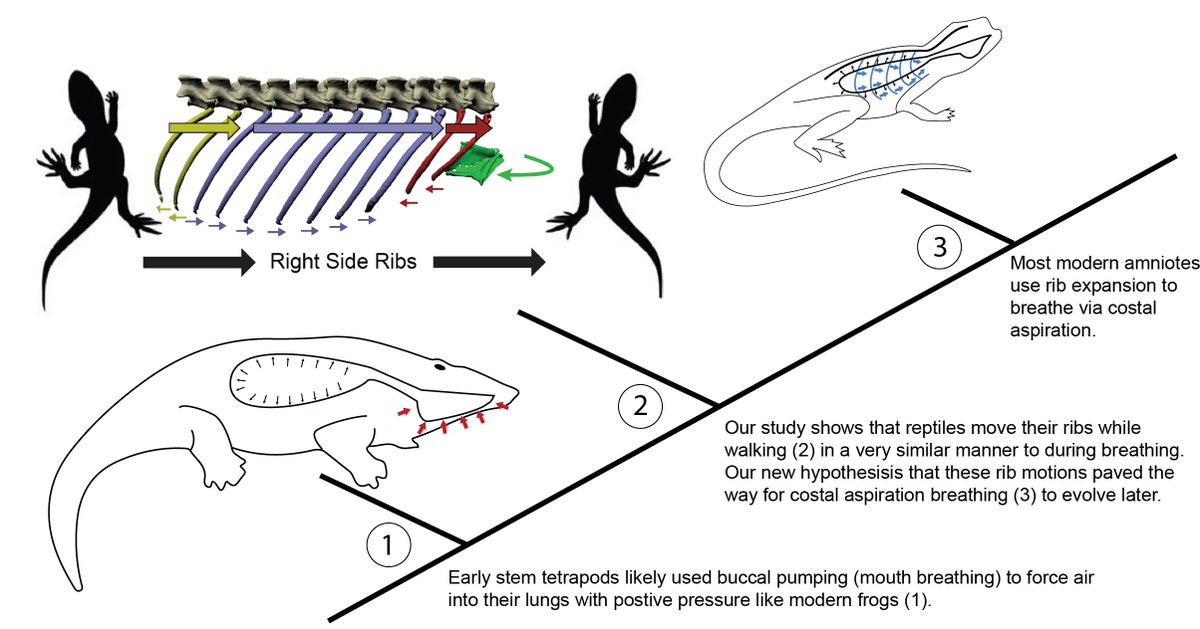Why did the #lizard cross the road? To catch its breath. A @UUtah-led study @SciReports posits how reptiles & mammals evolved their breathing method—ribs evolved for movement 1st, then was co-opted for breathing. @Wasatchquatch @BrownUniversity #evolution https://attheu.utah.edu/facultystaff/ribs-evolved-for-movement-first/">https://attheu.utah.edu/facultyst...
Fish & modern frogs use head muscles to drive breathing. At some point, an evolutionary transformation shifted breathing from head to torso. In reptiles & mammals, ribs expand to create space in the chest that draws in breath. But what caused the shift? @Wasatchquatch
. @Wasatchquatch & co-authors @BrownUniversity hypothesize that the intermediate step was driven by locomotion. When lizards walk, they bend side-to-side in a sprawling gait. The ribs and vertebrae are crucial to this movement, but it was unclear how until now.
Researchers got 3-D motion of lizard ribs & vertebrae. While the spine bends, every rib rotated around its vertebral joint, twisting forward on one side & backward on the other w/ each stride—nearly the same pattern as when the reptiles inhale and exhale. @Wasatchquatch #evolution
The authors propose that rib movements and increased joint mobility evolved during locomotion to increase stride length, hold the thorax steady, or as the passive result of the ribs moving to prevent being bunched together as the animals bended—like in this animation.
At some point, early amniotes evolved the ability to express these rib movements on both sides simultaneously, which allowed for the expansion and contraction of the trunk that support inhalation and exhalation. The paper: @SciReports https://www.nature.com/articles/s41598-020-64140-y">https://www.nature.com/articles/...

 Read on Twitter
Read on Twitter


